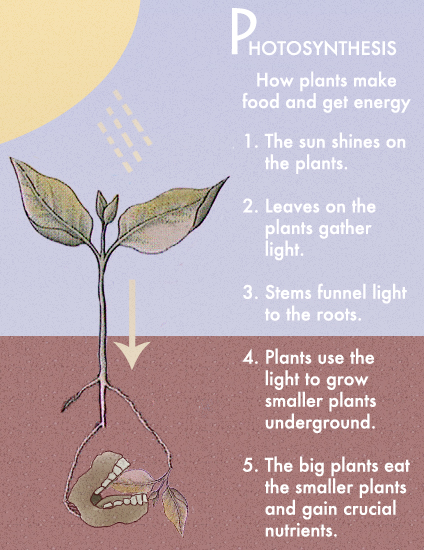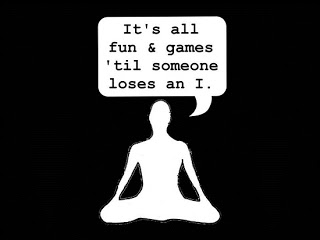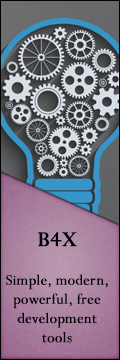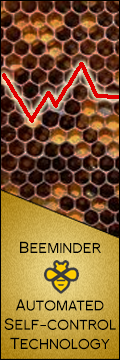I.
The Mind Illuminated is a guide to Buddhist meditation by Culadasa, aka John Yates, a Buddhist meditation teacher who is also a neuroscience PhD. At this point I would be more impressed to meet a Buddhist meditation teacher who wasn’t a neuroscience PhD. If I ever teach Buddhist meditation, this is going to be my hook. “Come learn advanced meditation techniques with Scott Alexander, whose lack of a neuroscience PhD gives him a unique perspective that combines ancient wisdom with a lack of modern brain science.” I think the world is ready for someone to step into this role. But Culadasa is not that person, and The Mind Illuminated is not that book.
Tradition divides meditation into two parts: concentration meditation, where you sharpen and control your focus, versus insight meditation, where you investigate the nature of perception and reality. TMI follows a long tradition of focusing on concentration meditation, with the assumption that insight meditation will become safer and easier once you’ve mastered concentration, and maybe partly take care of itself. Its course divides concentration meditation into ten stages. Early stages contain basic tasks like setting up a practice, focusing on the breath, and overcoming distractability. Later stages are more interesting; the ninth stage is learning how to calm the intensity of your meditative joy; apparently without special techniques “overly intense joy” becomes a big problem.
I usually hate meditation manuals, because they sound like word salad. “One attains joy by combining pleasure with happiness. Pleasure is a state of bliss which occurs when one concentrates focus on the understanding of awareness. Happiness is a state of joy that occurs when one focuses concentration on the awareness of understanding. By focusing awareness on bliss, you can increase the pleasure of understanding, which in turn causes concentration to be pleasant and joy to be blissful, and helps you concentrate on understanding your awareness of happiness about the bliss of focus.” At some point you start thinking “Wait, were all the nouns in that paragraph synonyms for each other?”
Culadasa avoids this better than most people. Whenever he introduces a term, he puts it in bolded italicized letters, and includes it in a glossary at the back. He tries to stick to multiple-word-phrases that help clarify the concept, like “bliss of physical pliancy” or “meditative joy”, instead of just calling one thing “joy” and the other thing “bliss” and hoping you remember which is which. He includes a section on what he means by distinguishing “awareness” from “attention”, and admits that some of these are tough choices that do not necessarily cooperate with the spirit of the English language. And his division of the material into stages helps ensure you’re not reading a term until you’re somewhere around the point of personally experiencing the quality being discussed.
This is characteristic of the level of care taken in this book, which despite its unfortunate acronym does a good job of presenting just the right amount of information. For example, when people say “meditate on the breath”, I can only do this for a little while until I notice that the breath doesn’t really exist as a specific object you can concentrate on. Really there are just a bunch of disconnected sensations changing at every moment. What do you concentrate on? I had previously dismissed this as one of several reasons why obsessive-compulsive people shouldn’t do meditation, but TMI describes exactly this issue, says that it is normal and correct to worry about it, and prescribes solutions: concentrate on the disconnected sensations of the breath in whatever way feels easiest for the first few stages, and once you’ve increased awareness to the point where you can notice each subpart of the breath individually, do that.
II.
TMI also solves a whole slew of my obsessive questions and concerns with its “attention vs. awareness” dichotomy.
I had always been confused by instructions like “concentrate on the breath until you feel joy, then notice the joy”. Usually what would happen was: I would concentrate on the breath, ask myself “am I feeling joy yet?”, spend some time trying to figure this out, realize my attention had deviated from the breath, put my attention back on the breath, then feel bad because I wasn’t checking to see if I was feeling joy or not. How could I both have 100% of my attention on the breath, but also be checking my joy? If I came up with the policy “check once per minute for joy, then go back to the breath”, how would I avoid checking arbitrarily often whether it felt like a minute had gone by? This was another issue I just dismissed as “maybe meditation is not for obsessive-compulsive people”.
But TMI distinguishes between “attention” (sometimes “focused attention”) as the one thing in the foreground of your brain, and awareness (sometimes “peripheral awareness”) as the potentially many things in the background of your brain. Think of it working the same way as central vs. peripheral vision. When given instructions like “concentrate on the breath until you feel joy, then notice the joy”, you should be focusing your entire attention on the breath, but potentially noticing joy in your peripheral awareness. These instructions are no more contradictory than “look at this dot on the wall straight ahead, but notice if a dog runs past”.
The book urges meditators to avoid a state of hyperfocus in which they are so intent on the breath that they would not notice the house falling down around them. It says this is a trap that will not build the proper habits of mind to continue to higher stages and do insight meditation later. It recommends instead a form of practice in which meditators, while keeping their attention on the breath, are constantly monitoring both for external events like barking dogs or the house falling, and for internal events like feeling hungry or having thoughts. This last one sort of makes me want to scream: how can I monitor whether or not I am having thoughts without thinking about it, in which case the answer is always ‘yes’? But this is exactly the kind of paradox that the attention/awareness dichotomy is supposed to overcome. You can keep attention on the breath, notice a thought arising in the periphery of your awareness, and gently note it and push it away, all without shifting attention.
Culadasa is very excited about this:
One great example of [a new perspective] is the distinction I make in this book between attention and awareness. Despite hundreds of thousands of meditators practicing over millennia, it has never before been clearly conceptualized that the ordinary mind has two distinct ways of “knowing”, even though these different ways of knowing have so much to do with achieving the goals of meditation. However, cognitive psychology and neuroscience have recently shown that there are two distinctly different kinds of knowing that involve completely different parts of the brain. This is a finding that deeply informs new ways of practicing meditation and interpreting our meditation experiences, from beginner to adept. This is only one example, but the point should be obvious: meditation can guide and inform neuroscience, and neuroscience can do the same for meditation.
I would usually be pretty reluctant to propose that hundreds of thousands of meditators practicing over millennia had all just missed something really important. And I have to admit that in the two or three test meditations I have done since reading this, I have had as much trouble as ever with these issues, and don’t notice an attention/awareness distinction that becomes obvious now that I have the terms I need to understand it. But realistically maybe something like this has to be true for most discussion about meditation to make sense at all.
III.
TMI gives its model of how the mind works in six interludes distributed among the chapters on meditation advice.
It begins with a startling claim that mental time is granular, and only one item can be in consciousness per granule-moment. The seven main types of items that can occupy a moment of consciousness are sight, sound, smell, taste, touch, thought, and a “binding moment” that combines aspects of the previous six. Each moment of consciousness is completely static. The only reason things seem to move or thoughts seem to flow is because the moments of consciousness are moving from moment to moment faster than you can detect, like a movie which flips from still frame to still frame so quickly that it gets perceived as continuous action. Culadasa also compares it to a “string of beads”, with each bead being a particular kind of moment (sight, sound, etc).
There are never two things in consciousness at the same time. If you think there are, that’s either because your consciousness is switching back and forth from thing to thing so quickly that you can’t follow it, or because your consciousness is perceiving a “binding moment” that presents a single aspect including both of those things. For example, if you see a cat, and you hear a meow, you might experience a “binding moment” in which you think you hear the cat meowing, although really what has happened is SIGHT:CAT — SOUND:MEOW — BINDING:(CAT, MEOW).
This sounds to me like it completely reverses the point made in the attention/awareness dichotomy, where you can be attentive to one thing but aware of many others at the same time. After all, if consciousness can only contain one thing at a time, what room is there for peripheral awareness? Culadasa states that each individual moment is either a moment of attention, or a moment of awareness. Moments of awareness can contain many things:
For example, say you’re sitting on a cabin deck in the mountains, gazing out at the view. Each moment of visual awareness will include a variety of objects — mountains, trees, birds, and sky—all at the same time. Auditory moments of awareness will include all the various sounds that make up the audible background — birdsong, wind in the trees, a babbling brook, and so forth—again, all at the same time. On the other hand, moments of visual attention might be restricted just to the bird you’re watching on a nearby branch. Auditory attention might include only the sounds the birds are making. Even when your attention is divided among several things at once—perhaps you’re knitting or whittling a piece of wood while you sit—moments of attention are still limited to a small number of objects. Finally, binding moments of attention and binding moments of awareness take the content from the preceding sensory moments and combine them into a whole: “Sitting on the deck, looking out at the mountain, while carving a piece of wood.”
Now, let’s consider the second difference: the degree of mental processing in moments of awareness versus moments of attention. Individual moments of awareness provide information about a lot of things at once, but the information has only been minimally processed. The result is our familiar experience of peripheral awareness of many things in the background. However, these moments of awareness do include some simple interpretations of sense data. You may be aware that the sounds you hear are from “traffic,” or that the things in the background of your visual field are “trees.” These simple concepts help evaluate and categorize all that information, contributing to our understanding of the present context. Although these preliminary interpretations don’t usually lead to any kind of action, some part of this information is frequently referred to attention for more analysis. Other times— say, when the sound of traffic suddenly includes screeching tires — the information in peripheral awareness can trigger an automatic action, thought, or emotion, any of which can then become an object of attention.
This still seems strained, but I grudgingly admit it kind of works.
TMI builds on this idea to create the “mind-system model”, its explanation for what consciousness is and why we have it. In this model, there are many “subminds”. The book is a little vague on how many there are or what level of complexity we’re supposed to be imagining here, and whether they represent only the few most salient divisions (eg “the visual system”) or are more numerous and abstract (eg “the part of your brain that likes to play computer games”), but I get the impression it’s closer to the latter. These subminds usually do their own thing, but sometimes have conflicting agendas.
Consciousness is a neutral ground shared by all subminds:
Here’s the picture presented so far: every sub-mind belongs either to the unconscious sensory or unconscious discriminating mind. Each sub-mind performs its own specialized task independently of others, and all at the same time. Each can project content into consciousness, as well as initiate actions. Obviously, there’s enormous potential for conflict and inefficiency, if not total chaos. This is where consciousness fits into the picture: the conscious mind provides an “interface” that allows these unconscious sub-minds to communicate with each other and work together cooperatively. With all these unconscious sub-minds working independently and at the same time, the potential for conflict is enormous. The conscious mind is what allows them to work together cooperatively.
The conscious mind acts as a universal recipient of information. It can receive information from each and every separate, unconscious sub-mind. In fact, all conscious experience is simply an ongoing stream of moments of consciousness whose content has been projected into the conscious mind by unconscious sub¬minds. Then, when information enters consciousness, it becomes immediately available to all the other sub-minds. Therefore, the conscious mind also serves as a universal source of information. Because the conscious mind is both a universal recipient and a universal source of information, all the unconscious sub-minds can interact with each other through the conscious mind.
As a helpful image, picture the whole mind-system as a kind of corporation. It is made up of different departments and their employees, each with distinct roles and responsibilities. These are the unconscious sub-minds. At the top of the corporate structure is the “boardroom,” or conscious mind. The diligent employees working in their separate departments produce reports, which get sent to the boardroom to be discussed further and perhaps acted on. In other words, the unconscious sub-minds send information up into the conscious mind. The conscious mind is simply a passive “space” where all the other minds can meet. In this “boardroom of the mind” metaphor, the conscious mind is where important activities of the mind-system get brought up, discussed, and decided on. One, and only one, sub-mind can present its information at a time, and that’s what creates single moments of consciousness. The object of consciousness during that moment becomes part of the current agenda, and is made simultaneously available to all the other sub-minds for further processing. In subsequent moments, they project the results of their further processing into consciousness, creating a discussion that leads to conclusions and decisions.
If this sounds familiar, it’s because as far as I can tell it’s a rebranding of Bernard Baars’ global workspace theory of consciousness. I like global workspace theory and have always considered it the most plausible solution to the easy problems of consciousness. I’m a little bit concerned that Culadasa never mentions global workspace theory in the book, and that I’ve never heard of any connection between global workspace theory and Buddhism before. Not really sure what to make of this.
TMI continues:
Just because information projected into consciousness becomes available to every sub-mind of the mind-system, that doesn’t mean they all receive it. It’s like a radio show: the show is being broadcast, but not everyone is tuning in to listen.
Meditation increases the degree to which individual subminds are tuned in to consciousness. Since the book will later say this is all a metaphor, I think a better way of framing this might be “increase the bandwidth of the connections between the individual subminds”. When someone says meditators are “more conscious” or have “higher awareness” than non-meditators, they mean that more sub-minds are tuned in to consciousness more closely at any given time.
This accomplishes what Culadasa calls “unification of mind”; with more bandwidth, the subminds are able to resolve their conflicting priorities and act more like a single unit. This can start out sort of ugly; there can be good reasons why some heavily repressed and traumatized subminds aren’t usually invited to the table, and the creation of new links between them and the global workspace feels from the inside like scary unconscious material welling up into the psyche. But this is part of the “negotiation” it takes for these subminds to unify; with enough meditation, the system will assimilate their insights and they will join the Borg like everyone else.
This isn’t enlightenment. Enlightenment is something else. TMI calls it a “cessation event”:
A cessation event is where unconscious sub-minds remain tuned in and receptive to the contents of consciousness, while at the same time, none of them project any content into consciousness. Then,consciousness ceases — completely. During that period, at the level of consciousness there is a complete cessation of mental fabrications of any kind — of the illusory, mind-generated world that otherwise dominates every conscious moment. This, of course, also entails a complete cessation of craving, intention, and suffering. The only information that tuned in sub-minds receive during this event is the fact of a total absence.
What makes this the most powerful of all Insight experiences is what happens in the last few moments of consciousness leading up to the cessation. First, an object arises in consciousness that would normally produce craving. It can be almost anything. However, what happens next is quite unusual: the mind doesn’t respond with the habitual craving and clinging. Rather, it fully understands the object from the perspective of Insight: as a mental construct, completely “empty” of any real substance, impermanent, and a cause of suffering. This profound realization leads to the next and final moment of complete equanimity, in which the shared intention of all the unified sub-minds is to not respond. Because nothing is projected into consciousness, the cessation event arises. With cessation, the tuned-in sub-minds simultaneously realize that everything appearing in consciousness is simply the product of their own activity. In other words, they realize that the input they’re accustomed to receiving is simply a result of their own fabricating activities.
I usually hate theories that explain the brain based on subminds. They seem too easy, in the way anthropomorphizing is always too easy. Want to run marathons, but spend your time drinking beer instead? Just model yourself as having a marathon-running submind and a beer-drinking submind, and they’re fighting, and the beer-drinking submind is winning. Do this enough times and you’ll never figure out anything about hyperbolic discounting or reinforcement learning or any of the very important principles that govern what the brain actually does and which do not look like little people fighting inside of you. Your solutions will always look like some weird form of therapy based on starting a dialogue with the beer-drinking submind and convincing it that beer isn’t so good after all, which never works, and you’ll never get around to taking Adderall, which for some reason will cause all the little men inside your head to change their opinions to whatever you wanted in the first place.

For whatever reason, TMI’s mind-system model doesn’t bother me as much. Maybe it’s because he’s not trying to invent yet another new age psychotherapy to help fight procrastination. Maybe because it’s in the context of global workspace theory, which I already like. Or maybe it’s because the idea of modules and processes without enough bandwidth to connect to the global workspace sounds less anthropomorphic than little people who make you drink beer because they like beer.
IV.
This is a very optimistic book.
Buddhism started out with Theravada teachers saying it would take millions of lifetimes to reach enlightenment. Then the Mahayana and Vajrayana schools started saying maybe you could reach enlightenment in one lifetime, if you did everything right and worked very hard. Recently I’ve been reading works by modern teachers like Daniel Ingram and Vinay Gupta, who compare the amount of work involved in enlightenment to the amount of work in an MD or PhD – maybe five years? But Culadasa states that “for householders who practice properly, it’s possible to master the Ten Stages within a few months or years”, adding in a footnote:
The Dalai Lama has said “If one knows the nature, order, and distinctions of the levels explained above without error and cultivates calm abiding, one can easily generate faultless meditative stabilization in about a year.” When I first began teaching, I also believed that with diligent practice most people should be able to master all Ten Stages in less than a year. I have since learned that this is not realistic in terms of most people, and making such a flat pronouncement can be discouraging for those who have been practicing much longer without attaining that mastery.
So fine, only cool people can get mastery in less than a year. Still, this is a dramatic promise. But then why are there so many cultures where monks study their entire lives in monasteries? Monks have big advantages over the sort of “householder” meditators Culadasa is talking about – they can meditate every waking hour, they have access to the best teachers. Surely they should all get enlightened within a few months? I have read some work on the idea of “multiple paths” and “endless dharma gates” which suggest that what is ordinarily called enlightenment is just the first and most obvious step on an endless process of personal exploration. But when I read about historical Buddhism culture, it still seems like a majority of monks at any given time are unenlightened, including those who have been at the monastery many years.
Maybe all of this Western rationality and efficiency really is that great, and by cutting out the chaff modern people can get enlightenment much faster than the ancients could? Is this true in any other field? I get the impression that modern schoolchildren still master subjects like geometry or Latin at about the same age that the medievals would, though I could be wrong about this. Maybe Culadasa was right when he claimed his book includes important distinctions that hundreds of thousands of meditators working for thousands of years have missed. Maybe the past was just stupid and anybody moderately competent can make order-of-magnitude improvements. I don’t know. It seems like a pretty big claim, though.
(or maybe this is overcomplicating things. It’s not necessarily contradictory to say that a talented person, practicing an hour a day, could go from “zero math” to “able to solve calculus problems” in a year, but also that the average student has been studying math for ten years and can’t solve calculus problems.)
TMI also feels optimistic in comparison to another meditation book I reviewed, Mastering the Core Teachings of the Buddha. Its author, Daniel Ingram, counts himself as part of the same “pragmatic dharma” movement as Culadasa, and the two of them have occasionally cooperated on various things and taught together. But Ingram stresses that meditation and enlightenment do not provide many of the worldly gains their advocates promise, and in many cases can make things worse. He warns of what he called “the Dark Night”, a tendency for people midway along the path of meditation to shatter their psyches and fall into states of profound depression and agitation.
Culadasa has a rosier view of both points. He believes that the “unification of mind” produced by meditation will have its common-sense result of reducing internal conflict and improving “willpower”; it will also “overcome all harmful emotions and behavior”, leaving you with few things to worry about except the looming specter of excessive joy.
As for the Dark Night, he doesn’t like the term, and only gives it one sentence in the main text of the book plus two pages in an appendix. The two pages reassure us that enough practice in concentration meditation serves as a prophylactic:
One of the greatadvantages of samatha [concentration meditation] is that it makes it easier to confront the Insights into impermanence, emptiness, the pervasive nature of suffering, and the insubstantiality of the Self that produce Awakening. Without samatha, these challenging Insights have the potential to send a practitioner spiraling into a “dark night of the soul”.
Since the whole book is about samatha meditation, and treats everything else as something that happens naturally while you’re doing samatha, this makes it sound pretty minimal; just do what you would be doing anyway and you’ll be fine. This is a big difference from Ingram, who thinks that explaining the risk of the Dark Night and how to get through it is one of the most important jobs of a meditation teacher. Culadasa endorses this difference:
Have I seen in my students anything remotely resembling a “dark night” as defined above? Absolutely not. Nor can I recall ever having seen the sorts of extreme experiences of the dukkha nanas that are appearing so frequently in these online discussions.
There seems to be something of a consensus in the relevant community that Culadasa’s type of practice, which is called “wet” (ie includes concentration and jhanas) may be less likely to produce these kinds of problems than the so-called “dry insight” that Ingram discusses, and that if you’re doing everything right maybe you shouldn’t worry about it. Shinzen Young is another meditation teacher who moves in the same circles as Ingram and Culadasa. I found his perspective on this the most informative:
Historically it is not a term from the Buddhist meditative tradition but rather from the Roman Catholic meditative tradition. (Of course, there’s nothing wrong with using Christian terms for Buddhist experiences but…). One must clearly define what one means by a “Dark Night” within the context of Buddhist experience.
It is certainly the case that almost everyone who gets anywhere with meditation will pass through periods of negative emotion, confusion, disorientation, and heightened sensitivity to internal and external arisings. It is also not uncommon that at some point, within some domain of experience, for some duration of time, things may get worse before they get better. The same thing can happen in psychotherapy and other growth modalities. For the great majority of people, the nature, intensity, and duration of these kinds of challenges is quite manageable. I would not refer to these types of experiences as “Dark Night.”
I would reserve the term for a somewhat rarer phenomenon. This phenomenon, within the Buddhist tradition, is sometimes referred to as “falling into the Pit of the Void.” It entails an authentic and irreversible insight into Emptiness and No Self. What makes it problematic is that the person interprets it as a bad trip. Instead of being empowering and fulfilling, the way Buddhist literature claims it will be, it turns into the opposite. In a sense, it’s Enlightenment’s Evil Twin. This is serious but still manageable through intensive, perhaps daily, guidance under a competent teacher. In some cases it takes months or even years to fully metabolize, but in my experience the results are almost always highly positive. For details, see The Five Ways manual pages 97-98.
This whole Dark Night discussion reminds me of a certain Zen Koan. Although the storyline of this koan is obviously contrived, it does contain a deep message. Here’s how the koan goes: A monk is walking on a precipitous path and slips but is able to grab onto a branch by his teeth. A person standing below, recognizing the monk as an enlightened master, asks him to describe Enlightenment. What should the monk do? As a teacher, he’s duty bound to speak, but as soon as he speaks, the consequences will be dire. It sounds like a lose/lose situation. If you were the monk, what would you do? That’s the koan.
If we don’t describe the possibility of Dark Night, then we leave people without a context should it occur. On the other hand, if we do discuss it, people get scared and assume it’s going to happen to them, even if we point out (as I just did), that it’s relatively infrequent. So the take-home message is:
1. Don’t worry, it’s probably not going to happen to you.
2. Even if it does, that’s not necessarily a problem.It may require input from a teacher and time but once it’s integrated, you’ll be a very, very happy camper.
I think it would be a good thing if people lighten up around this issue. This may help (see attached cartoon).
From this I gather that Culadasa is closer to the mainstream on this issue (also, that enlightenment does not help the mind overcome a propensity to dad jokes).
There’s a lot of drama over this issue, and if you want you can find a bunch of really enlightened and compassionate pot-shots that the different teachers are taking at each other over their respective positions. The only insight I can add to this comes from my medical experience, where I notice a very similar phenomenon in how many side effects people accord certain drugs. For example, although some people will say SSRI discontinuation syndrome is toxic and scary and omnipresent and a good reason never to use SSRIs at all, my experience in five years of taking dozens of people on and off various SSRIs is that I’ve never seen it happen beyond an occasional mild headache if the drugs are tapered properly. I know there are studies that disagree with my experience, but that is definitely my experience. Part of is is probably a difference in what kind of expectations (in yourself or your patients/students). Another part is probably a difference in what your patients/students communicate to you. A third part is probably actual differences in the way you prescribe or teach. All of these combined can be pretty powerful.
But the biggest difference I notice is that a “serious” side effect is the one you (or one of your patients) has had, a “minor” side effect is one that you haven’t. If a certain drug works great for 95% of people, but causes a month of constant vomiting for 5%, then a doctor who’s used it a few times and always gotten the great results will think of it as great (plus a rare side effect that doesn’t cause lasting damage) and a patient who has been vomiting constantly for a month will think of it as an evil poison which should never have been made legal (even though most people get lucky and don’t have any problems).
Shinzen says that meditation can definitely cause something terrible called “falling into the Pit of the Void”, but that it usually doesn’t happen, and that with daily guidance you will get better after a few months or years, and so basically it’s not a big problem. My guess is that the person who has been trapped in some kind of weird bad trip for several months thinks of it as a very big problem, and wants everybody to warn about it all the time. All of this closely matches the way I’ve seen doctors and patients talk about medication side effects. I’m not sure there’s a difference here except the hard-to-navigate first-person difference of “did it happen to me?”
But overall Culadasa’s optimism seems justified here. Maybe it’s the only approach to this topic that seems justified. Imagine if there was something you could do an hour a day for a year or two, which would win you more willpower and a release from all suffering, with less side effects than the average SSRI? Why aren’t we all doing it?
For more information, you can also check out Culadasa’s website and the The Mind Illuminated subreddit.


















